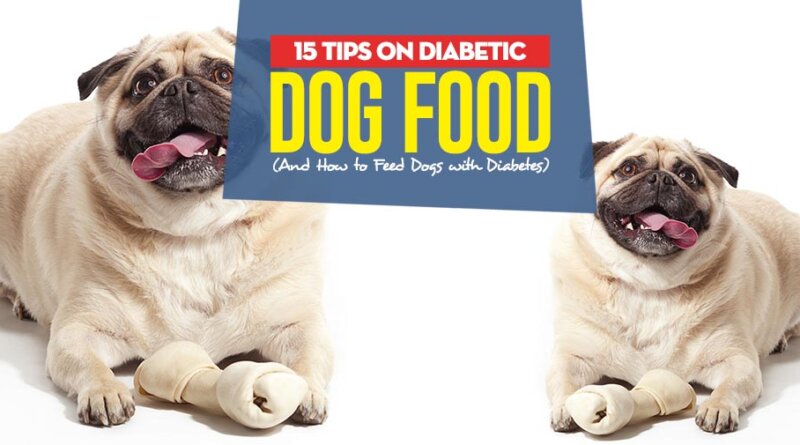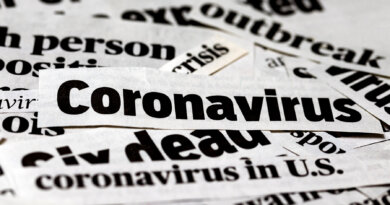15 Tips on Diabetic Dog Food and How to Feed Dogs with Diabetes
Having a dog diagnosed with diabetes can be daunting, but we now have a better understanding of canine diabetes due to more canine studies in recent years.
Part of that is the proper nutrition and diabetic dog food to help you manage your pet’s condition.
Dogs with diabetes can live a normal life, so long as you have the right tools on your side. You must work with your veterinarian and plan the right treatment for a diabetic dog.
It’s not something you should be doing on your own. This plan will include diabetic dog food, medication, and a change in activity levels.
15 Tips on Diabetic Dog Food and Feeding
1. Talk to Your Vet About Your Diabetic Dog’s Diet
When your dog is first diagnosed with diabetes, you should first talk to your vet about the dog’s diet.
Depending on your pet’s current state of health, you may or may not need to make adjustments to the quantity or type of food that the dog eats.
Not all dogs with diabetes require a special type of dog food or diet.
It’s important to know what your individual pooch needs by talking with a veterinarian.
If you’re told that diabetic dog food or any of vet recommended brands should be part of your dog’s new treatment plan, you may also want to seek the advice of a canine nutritionist for a second opinion.
2. Consider Alternatives to Prescription Diabetic Dog Food
If your diabetic dog requires a change to the type of food they eat, know that prescription diets are not your only option.
While in some cases, these foods are the best choice, in some other cases, vets may push prescription dog foods because they are paid to do so or because they aren’t aware that there are other options out there.
If your vet recommends a prescription food that you are not comfortable with, make a note of the details of that food brand.
For example, if your vet recommends the Hill’s Diet Diabetic Recipe, ask what makes this food the right choice.
Your vet will likely tell you that the high fiber content, restricted fat content and lack of simple sugars is their reason for recommending this dog food brand.
Take this information and the specific levels of nutrients from the Hill’s Diet food and begin your own research into other dog food brands that may be suitable (and cheaper).
For example, the below other over-the-counter dog foods for diabetes may also be good.
If you prefer not to feed any of the diabetes dog food brands recommended by the vet for your diabetic dogs, and you cannot find a reasonable commercial alternative that’s affordable, you can also consider home cooking or a raw diet (see below).
3. Home Cooking Can Help a Diabetic Dog to Thrive
Switching to diabetic homemade dog food recipes may seem like a time-consuming and difficult approach to undertake, but there are many resources available to help you.
Not only do we have plenty of recipes here on Top Dog Tips (including our free eBook), but there are more than a few cookbooks available that include diabetic dog food recipes.
Some of our favorite homemade dog food cookbooks include:
• 101 Vet-Approved Homemade Dog Food Recipes
• Home-Prepared Dog and Cat Diets
Many pet owners of diabetic dogs have found their pet’s condition easier to manage with home cooking.
Some of Samantha’s best recipes for dog diabetes you can try are this one, this one, and this one.
Be sure you run any recipes by your veterinarian before feeding them to your pooch. Just because an online site says, it is a nutritionally balanced diabetic dog food doesn’t mean it truly is because every dog is different.
4. Raw Feeding Might Be Good for Diabetic Dogs
Unlike commercial diets, raw feeding for dogs allows for easier restriction of calories, especially carbohydrates and simple sugars.
Additionally, unlike home-cooked dog food recipes, raw feeding is much easier and less time-consuming for pet owners.
Raw food is beneficial for some diabetic dogs because it focuses on feeding whole, healthy and natural foods.
This increases your dog’s intake of vitamins and protein, eliminates chemicals and preservatives, avoids unnecessary carbohydrates and grains, and puts much less stress on a dog’s internal organs as nutrients are being processed.
5. Don’t Be Afraid to Try Another Diet Type
If one type of diabetic dog diet – commercial, home-cooked, raw – doesn’t agree with your diabetic dog, don’t be afraid to try a different diet type.
For example, if a diabetic dog food brand does not improve your pet’s health over a few weeks, look into trying a raw food diet or homemade recipes instead, or try a different brand.
All dogs are different, and their conditions will be different as well. Your individual dog will thrive on various diets that are good specifically for this individual dog.
Just because your dog’s diabetes is unmanageable on commercial dog food does not mean it will be unmanageable on a home-cooked or raw diet too.
6. Different Diets May Work Better with Different Insulins
Many owners of diabetic dogs have found that different insulin types tend to be more effective with certain diets. For example, Humulin N has been widely reputed as being most compatible with dogs on a raw diet.
Finding a diabetic dog food diet that works for your diseased pet and insulin that works with that specific diet is a balancing act.
It will take some time, but until you find a diet and insulin system that works for you, know that there are plenty of combinations out there to try and experiment with.
7. Get Rid of Those Traditional Dog Treats
Many commercial dog treats are widely known for being exceptionally high in calories, sugars, and fat and containing a large number of artificial ingredients.
No dog needs to consume these types of ingredients, and there are healthier alternatives available. Ideally, you should pick single-ingredient dog treats high in protein.
You can also choose to ditch all commercial dog treats completely and substitute more diabetic-friendly whole food treats. Some great all-natural treatment options you can give to your dog include:
- Carrots
- Blueberries
- Broccoli
- Apples (without the core)
- Natural fish jerky (no salt)
- Natural beef jerky (no salt)
- Melon
There are many other human foods available that you can try with a diabetic dog.
8. Maintaining a Healthy Weight in Diabetic Dogs
Weight plays an important role in the health of a diabetic dog. This is why diabetic dog food is often lower in calories and lower in fat.
Regardless of what type of diet you feed a diabetic dog, keep a close eye on your dog’s weight.
Initially, most owners of diabetic dogs are instructed to help their dogs lose weight by reducing calorie intake and increasing exercise.
However, it’s essential not to reduce the diabetic dog’s weight too quickly and prolong weight loss any longer than needed.
Tracking your dog’s weight with a weekly weigh-in can be beneficial during the first few months of managing your dog’s diabetes.
This will help you track weight loss vs. calorie intake to understand your dog’s specific caloric needs.
9. Always Time Your Insulin Shots with Mealtimes
Your vet will instruct you on how and when to give your dog their insulin injections. Stick to this schedule so that insulin injections can do what they are designed to do.
A good document with guidelines to refer to is this AAHA Whitepaper (PDF).
For dogs receiving insulin once daily, 2/3 of daily diabetic food intake is usually given before the first insulin injection. The second meal is then given between six and eight hours after the insulin injection.
For dogs receiving insulin twice daily, ½ of the daily diabetic dog food intake is usually given before the morning insulin injection.
The second meal is then given between 10 to 12 hours after the first insulin injection. The second insulin injection is then given after the second meal.
If your diabetic dog requires insulin shots, time these shots with your dog’s mealtimes.
10. Make Sure to Stay on a Feeding Schedule
When your diabetic dog eats, its blood sugar rises. However, unlike the average dog, a diabetic dog does not produce or use insulin effectively enough to turn that sugar into energy.
This is why you must provide an injection of insulin after eating.
If dog’s insulin shots are given too close together, and your dog receives too much insulin, they may experience hypoglycemia or low blood sugar.
When this happens, the dog will become listless and unresponsive.
Measure your dog’s blood sugar, call a veterinarian and follow their advice.
It will take a few hours for a dog’s blood sugar to return to normal, so a vet may have you give your dog another meal or bring the dog in for an exam.
If you forget to give insulin after your dog eats, it will experience high blood sugar.
This will present the same symptoms you noticed when your pooch was first diagnosed with diabetes – increased thirst and urination.
This is not dangerous, but you should measure your dog’s blood sugar when you remember the missed insulin and give the shot if needed at that time.
11. Maintain Consistency With Your Dog’s Meals
As a rule of thumb, any alteration in the carbohydrate content of your dog’s meals will result in a change in the amount of insulin needed.
This is why it’s important to choose diabetic dog food and stick with it.
If you choose to feed your dog a raw diet or home-cooked diet, you can maintain consistency by tracking nutrient levels rather than feeding the same meal every mealtime.
After you decided on a feeding schedule, stick to it as much as possible.
12. When a Diabetic Dog Refuses Food…
Meals and insulin injections go hand in hand, so if your diabetic dog refuses food, you need to adjust its insulin.
Despite not eating, most diabetic dogs will still require an insulin injection, but this injection will be considerably less than usual.
How do you know how much insulin to give a diabetic dog who doesn’t eat?
Talk to your vet. Every dog is different, and a vet will prepare you for such an occasion by mapping blood glucose levels and correlating insulin injection amounts.
Diabetic dogs who do not eat a meal when they should often require roughly 25% of their usual dose of insulin, despite not eating.
13. When a Diabetic Dog Vomits…
When a diabetic dog vomits after eating, its food intake has obviously been reduced.
This reduction in diabetic dog food intake means that your dog will need a reduction in their insulin injection.
How do you know how much insulin your dog will need?
The amount of insulin a diabetic dog should receive after vomiting will depend upon whether they have vomited up part or all of their meal.
Talk to your vet and establish insulin levels and how they correlate to blood sugar readings for your dog.
Diabetic dogs who vomit after eating will generally require between 25% to 50% of their usual insulin injection.
14. Supplementing the Diabetic Dog’s Diet
Many owners of diabetic dogs choose to supplement their dog’s diet to manage a dog’s diabetes better.
These supplements are best when given at mealtimes and include a certain group of nutrients: L-carnitine, chromium, omega-3 fatty acids, cranberry extract, probiotics, and digestive enzymes.
Not all dogs with diabetes require supplements, and not all supplements need to be given to see any benefit. If you do choose to use pet supplements, you must talk with your vet about the right dosage of each supplement for your dog.
You must also record any supplements with your vet since some of them can influence the effectiveness of medications or even interact with medications your pet could be taking.
Supplements can be beneficial to managing canine diabetes, but only when given appropriately and monitored carefully.
Some of our favorite supplements for dog diabetes include:
15. Know What Your Dog Eats and When
Many dog owners habit giving their dogs table scraps, extra treats, and other food-based items.
For diabetic dogs, this type of indiscriminate feeding can have serious consequences, so it is important to know what your dog eats and when they eat it.
Even a single treatment can create an imbalance in your dog’s blood sugar.
If you live with family members or have a friend care for your dog, make them aware of your dog’s diabetes.
Make sure that everyone is aware of the consequences of indiscriminately feeding a diabetic dog.
READ NEXT: 8 Expert Tips On How To Care for a Diabetic Dog
Want to share this?
Related





